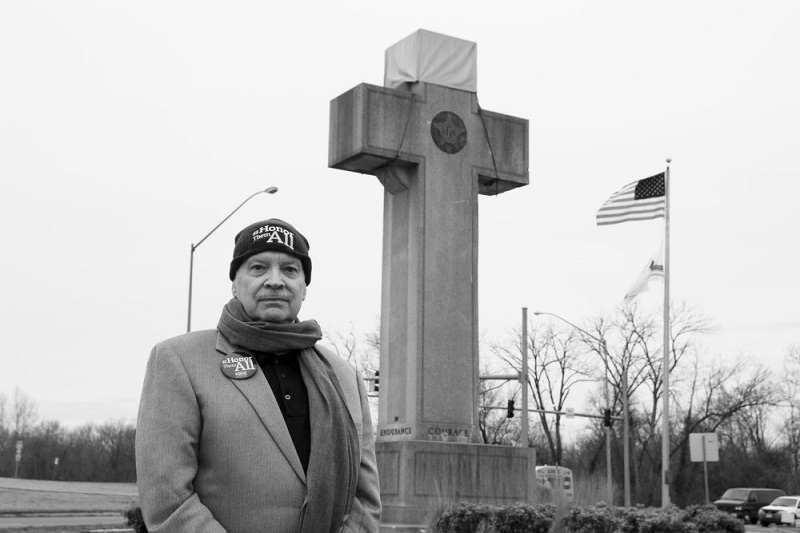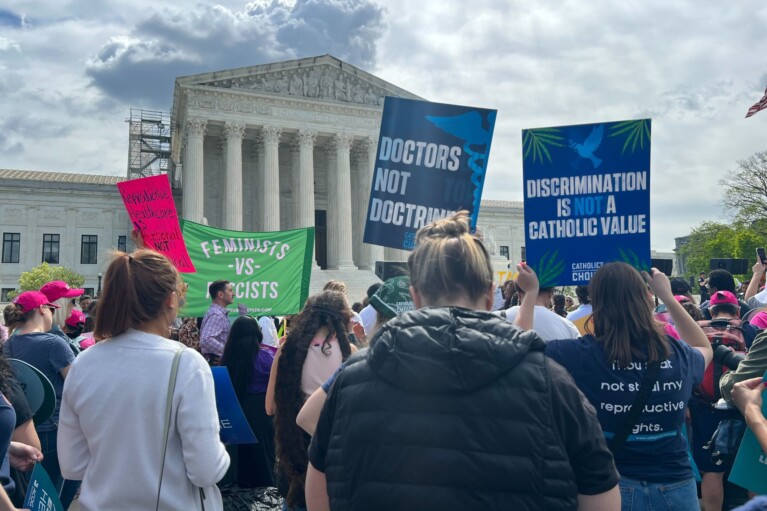
The U.S. Supreme Court on Thursday ruled that a massive cross can remain on public land at a busy intersection in Bladensburg, Md.
A majority of the justices, led by conservative Justice Samuel Alito, ruled that the cross was constitutional, rejecting claims that it violated the Constitution’s prohibition on establishing a government religion.
The monument at the center of the dispute is a 40-foot tall Latin “Peace Cross” at the junction of Bladensburg Road, Baltimore Avenue and Annapolis Road. The memorial was completed in 1925 to honor the Prince George’s County soldiers who were killed during World War I.
In 2014, the American Humanist Association and others filed a lawsuit, arguing that the cross’ presence on public land and the use of public funds by the Maryland-National Capital Park and Planning Commission to maintain the cross were unconstitutional.
The 4th U.S. Circuit Court of Appeals agreed with them. That court ruled in 2017 that “The monument here has the primary effect of endorsing religion and excessively entangles the government in religion.” The judges wrote that “the purported war memorial breaches the ‘wall of separation between Church and State.’”
That ruling was reversed Thursday by the high court, although there were varied reasons that the seven justices in the majority decided to do so. The two justices dissenting in the case were Ruth Bader Ginsburg and Sonia Sotomayor.
Alito wrote, “Although the cross has long been a preeminent Christian symbol, its use in the Bladensburg memorial has a special significance,” given the historical use of the cross to mark the graves of soldiers who lost their lives. The cross has taken on a secular meaning in other circumstances.”
To destroy or deface the cross “that has stood undisturbed for nearly a century would not be neutral and would not further the ideals of respect and tolerance embodied in the First Amendment,” Alito added.
Ginsburg, who was joined by Sotomayor in her dissent, wrote that using the cross as a war memorial does not transform it into a secular symbol.
“Just as a Star of David is not suitable to honor Christians who died serving their country, so a cross is not suitable to honor those of other faiths who died defending their nation,” she wrote.
“As I see it, when a cross is displayed on public property, the government may be presumed to endorse its religious content. The venue is surely associated with the State; the symbol and its meaning are just as surely associated exclusively with Christianity.”
Maryland Gov. Lawrence J. Hogan (R) lauded Thursday’s Supreme Court decision.
“This is a great victory after we fought tirelessly to keep the Peace Cross standing in recognition of the valor, endurance, courage, and devotion of our World War I veterans,” he said in a statement. “Today’s ruling ensures that this memorial—a dignified tribute to those who came before us and made the ultimate sacrifice—will stand tall and proud for the ages.”



 Creative Commons Attribution
Creative Commons Attribution